Today, cervical osteochondrosis has become significantly younger. The reasons for this are an improvement in living conditions, a significant decline in mobility for work and rest, and an enthusiasm for fast food. Even minor physical exertion or shocks lead to an imbalance in the metabolism and increase trauma to the intervertebral discs.
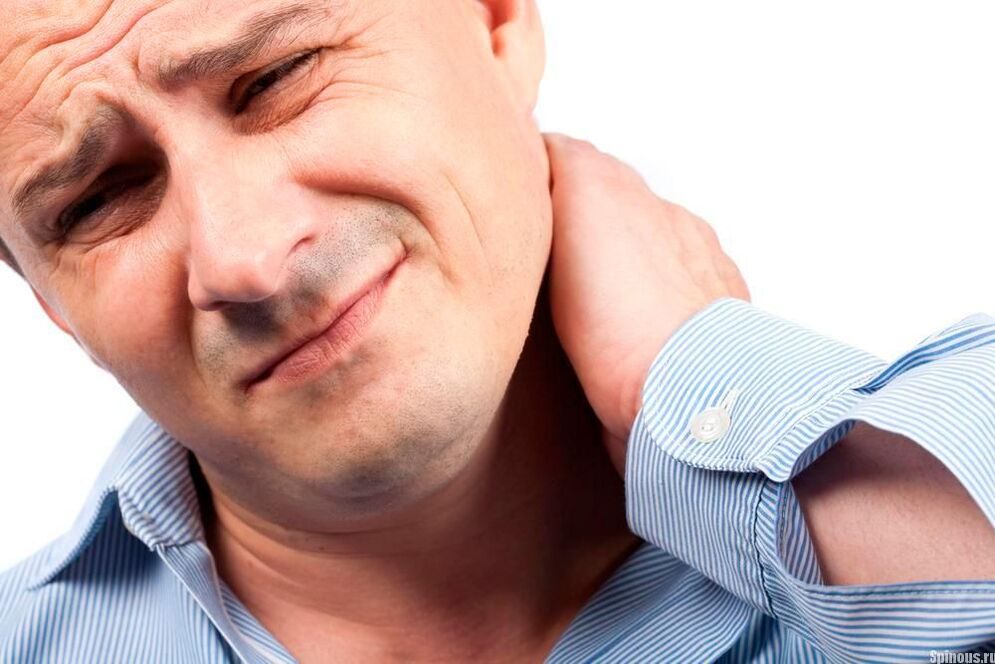
Therefore, it is not surprising that there are many inquiries on the Internet about osteochondrosis of the cervical spine: symptoms and treatment. We provide a brief overview of these questions because they are always of an individual nature and a vertebral doctor or neurologist can only answer them during an appointment.
Characteristics of the disease
With osteochondrosis of the neck, the intervertebral discs of the intervertebral space are destroyed. They usually perform a shock-absorbing and protective function.
Since they are located between the vertebrae, they prevent the vertebral bodies from touching each other. When walking and during more active movements, they can compress, providing flexibility to the spine. In addition, the intervertebral disc apparatus creates passages for the nerves exiting the spinal cord.
When discs and ligaments are destroyed, the vertebrae begin to rub against each other. Friction causes pain and other discomfort in the neck. When the vertebrae come close to each other, the nerves are pinched and additional symptoms appear in the parts of the body for which the affected neurons are responsible. Neurological symptoms appear.
Osteochondrosis can affect any part of the spine and symptoms can vary. Disc destruction can occur in several areas at the same time.
Greater stress falls on the lumbar spine, which means that the intervertebral discs and ligaments are most often subject to changes here. However, osteochondrosis of the cervical spine causes the most suffering in humans. Finally, the main vessels supplying blood to the brain run through the neck and there are many nerves and nerve endings.
Statistics show that the neck region is most often affected. Of all the parts of the spine, it is the most mobile. On a video on the Internet you can see how the disease develops and what complications arise.
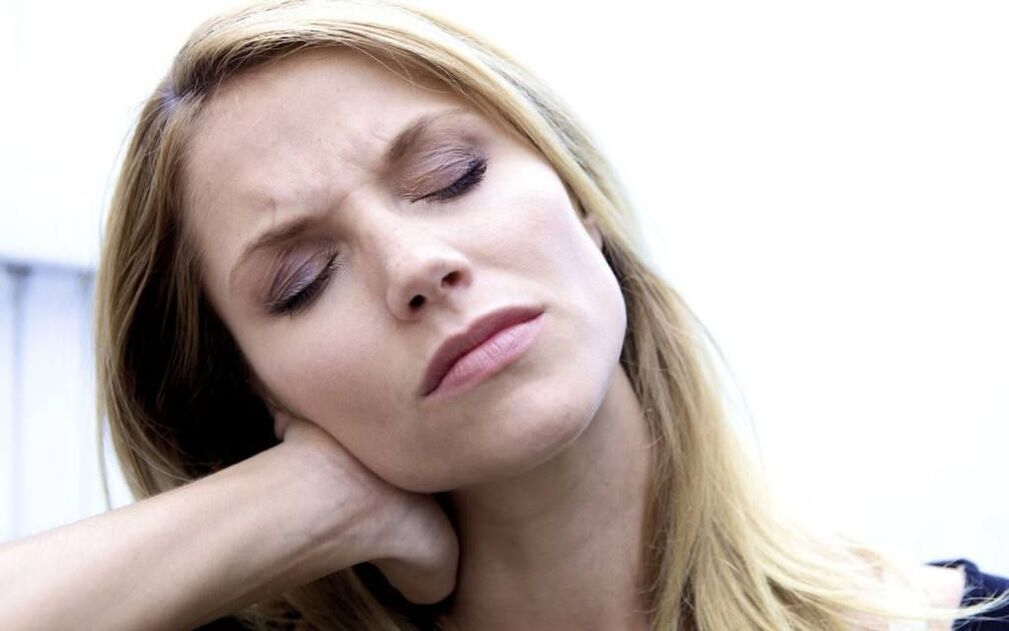
The symptoms of cervical osteochondrosis in women are fundamentally no different from the symptoms that occur in men. There is a difference: the most common symptom of the disease in women is headaches.
causes
The classic causes of cervical osteochondrosis include:
- low mobility, lack of sufficient physical activity;
- Disturbances in metabolic processes;
- Salt deposits, especially in the neck area;
- unbalanced diet;
- Incorrect posture when working at the computer, driving a car or doing other static activities.
If you are prone to deforming joint diseases or salt deposits, the risk of developing a disease due to an unhealthy lifestyle increases.
Classification of clinical manifestations
Osteochondrosis of the cervical spine, symptoms and treatment of the pathology are closely related, but complex therapy is prescribed only after instrumental clarification of the diagnosis. Currently there is the following classification of manifestations.
Radicular syndromes or cervical radiculitis
Radicular syndromes are the medical name for a group of symptoms that occur due to pinched nerve roots between the cervical vertebrae. Such compression initially manifests itself in the form of paresthesia - numbness, tingling and the feeling of "goosebumps" on the skin.
Ignoring and not treating such manifestations leads to further progression of the disease. Acute (quick or delayed) pain occurs, which develops into chronic pain syndrome.
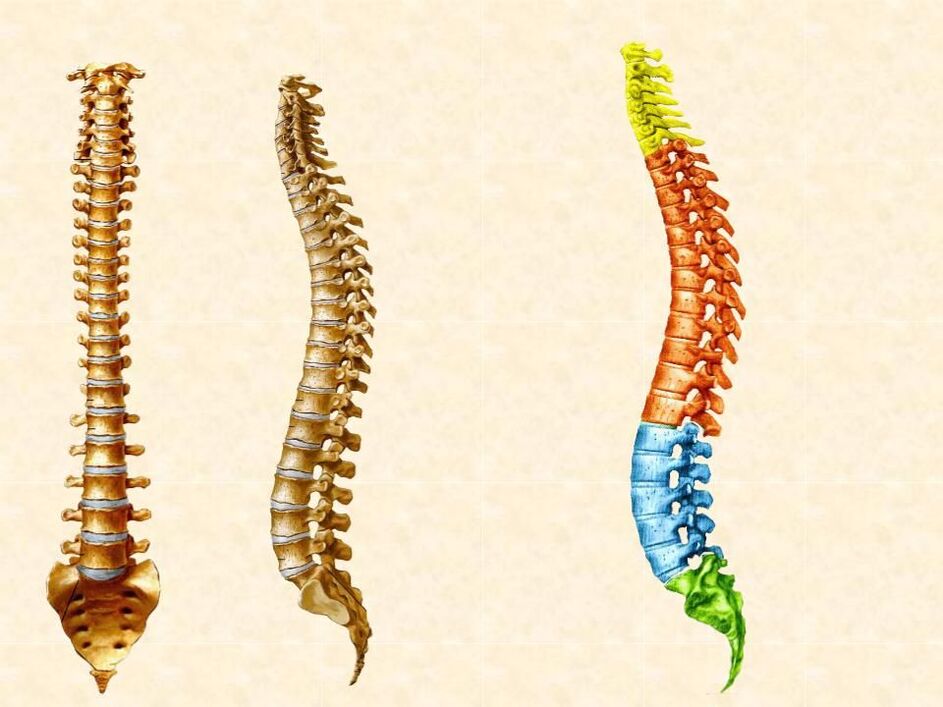
The manifestations characteristic of cervical radiculitis depend on the localization of degenerative processes, i. e. H. Between which vertebrae were the nerve roots pinched:
Irritable reflex syndrome
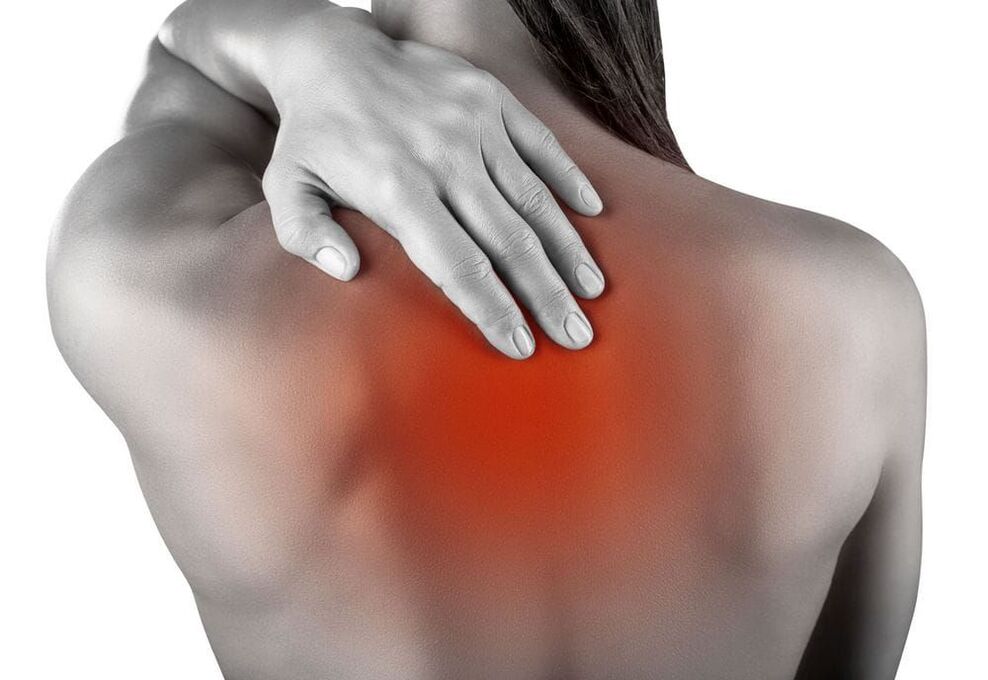
Pain in irritable reflex syndrome when pinching the roots of the lower cervical vertebrae occurs between the shoulder blades.
This syndrome is characterized by diffuse, burning, stabbing pain in the neck, back of the head, or upper back. They occur after sleeping or at the beginning of a movement after holding a position statically for a long time. It is possible that the pain radiates painfully to the heart or shoulder joint.
Vertebral artery syndrome
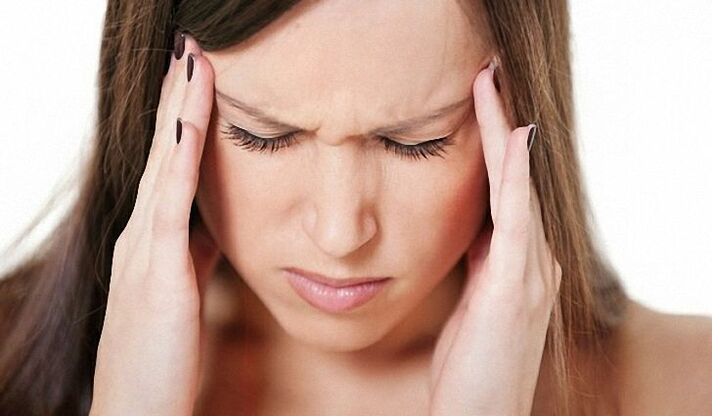
Osteochondrosis of the cervical and thoracic spine, symptoms (and its treatment) can manifest themselves as symptoms that are combined into vertebral artery syndrome:
- Headache – punctate, pulsating or burning, spreading diffusely;
- Places of localization - above the eyebrows, in the temples, on the crown, on the back of the head;
- the pain is constant, but sometimes occurs in the form of attacks;
- the intensity of pain increases after the first movements from static positions;
- In weakened people, nausea may occur, coordination of movements may be impaired, and dizziness and fainting may occur;
- Possible deterioration in hearing and visual acuity, "bunnies" in the eyes, tinnitus, snoring.
On a note! Very often the only signs of neck osteochondrosis are pharyngeal symptoms. These include: pain, dryness and/or difficulty swallowing. However, ignoring such symptoms can result in enormous costs. These symptoms occur in some inflammatory diseases that can progress to cancer.
cardiac syndrome

The preliminary diagnosis of osteochondrosis of the cervical spine is often complicated by the presence of cardiac syndrome in the patient.
It is characterized by:
- increased pulse;
- Attacks or persistent pain in the heart area, which is often confused with angina;
- Chest pain worsens after sudden movements or heavy lifting.
That is why, if angina is detected, an experienced doctor will send the patient for an x-ray of the cervical and thoracic vertebrae, since with a parallel diagnosis of cervical osteochondrosis, the symptoms and treatment at home are specific.
For example, a vertebrologist is obliged to warn the patient that if nitroglycerin or other coronary dilator drug does not relieve "heart pain", then he should not take it several times in a row in a short period of time. It is enough to drink ibuprofen or Nurofen forte.
For your information! There is another way to distinguish a true angina attack from painful coronary syndrome. With the latter, the patient is able to walk quickly.
Minor symptoms
nausea
Nausea and belching are the result of impaired blood circulation in the brain. Patients often associate this symptom with nutritional errors and begin to restrict the amount of food and change their diet.
Nausea and belching themselves can reduce appetite. All these phenomena lead to the fact that a person begins to lose body weight and the nutritional balance in the body is disrupted.
An attack of nausea can end with vomiting, which also occurs with careless turns of the head, bending of the body, or strong physical exertion. In this case, poor blood circulation leads to inadequate nutrition of the inner ear and the balance center.
Feeling of suffocation
A feeling of lack of air occurs when the phrenic nerve is pinched in the neck area of the spine. This important nerve is part of the cervical plexus and regulates the depth of breathing and the frequency of breathing movements.
Patients complain of difficulty breathing with all their might. Shallow breathing leads to a decrease in oxygen concentration in the blood, causing shortness of breath and, in difficult cases, suffocation.
Breathing pauses can occur at night, which are often accompanied by a snoring attack. Night problems are caused when a person lies in an uncomfortable position and the head and neck are not in the anatomically correct position.
If these problems are accompanied by unsatisfactory hygiene of the sleeping area, if the room is poorly ventilated and dusty, and there is no flow of clean air at night, the patient suffers from hypoxia. There is a lack of oxygen in all tissues of the body, so the patient does not feel rested when he wakes up
Feeling of tinnitus
Tinnitus occurs due to problems with the blood supply to the vestibular system. The blood vessels there run through the cervical vertebrae of the spine.
Disturbances in the parts of the inner ear cause various sound sensations:
- background noise;
- Ringing, squeaking.
A complex of such complaints is usually referred to as cochlear or cochlear syndrome.
Important: If the patient does not seek medical attention with these symptoms, hearing acuity will decrease over time.
Patients often think that such disorders are related to the hearing analyzer itself. It can also be difficult for a doctor to understand the situation, especially if there are no clear signs of osteochondrosis.
However, problems with the vertebrae lead to specific hearing problems. Osteochondrosis of the cervical vertebra can be distinguished by the features of its occurrence, so noise occurs when a person remains in one position for a long time.
Throat problems
Osteochondrosis often becomes noticeable only by a complex of pharyngeal symptoms:
- Sore throatWhen an illness occurs unrelated to food intake, you can tell the difference between the appearance of symptoms and sudden movements of the head and neck.
- Sensation of a foreign body in the throatappears and disappears.
- Complaints of itching and dry throat occurStrong unpleasant sensations can provoke the patient's urge to cough. The cough causes an increasingly dry and scratchy feeling. These symptoms are a result of simultaneous damage to nerve fibers and blood vessels.
Important: Such symptoms can be observed with inflammation in the cervical vertebrae and with the appearance of tumors.
Visibility problems

Deterioration of visual function is less common; it occurs more often in people with atherosclerotic lesions of the head vessels and a decrease in general pressure.
The vessels supplying the eyes with their osteochondrosis also run through the cervical vertebrae, which leads to the following complaints:
- the appearance of a "haze" in the eyes;
- decreased visual clarity and sharpness;
- the appearance of black dots or rods;
- Difficulty concentrating on a specific topic.
The symptoms are not constant. Patients note that vision sometimes worsens and sometimes improves.
A characteristic symptom of osteochondrosis is the inability to influence the state of vision with the help of glasses, medications and gymnastics. Eliminating symptoms is only possible if the root cause of the problem is treated.
unconsciousness
Impaired blood supply to the brain can lead to loss of consciousness or syncope. This happens when blood flow to the brain is temporarily interrupted.
In this case, there is not necessarily a pinch in the neck area, but rather irritation from the deformed structures of the vertebrae is sufficient. In response to this effect, there is significant spasm in the arteries.
Consciousness returns to a person fairly quickly. This is facilitated by changing your posture. A person who has lost consciousness must be placed in a horizontal position and raise his legs. In this way, blood from the lower part of the body helps restore blood supply to the suffering brain.
Such short-term conditions usually do not entail any complications or consequences. If the cerebral circulatory disorder is more severe, consequences are possible.
Important: After losing consciousness, a patient must see a doctor to undergo an examination and prevent recurrent seizures.

Despite the short duration of the illness, a person who has lost consciousness must call an ambulance.
Blood pressure problems
The presence of osteochondrosis in the cervical spine leads to increases in blood pressure. This can be particularly noticeable in middle-aged and older people. This is because the center responsible for the vascular response to changes in the external environment is located in the brain and also suffers from insufficient blood supply.
The presence of irritating factors in the form of a deformed vertebra aggravates the situation. This is how VSD symptoms arise against the background of cervical osteochondrosis. Depending on the predisposition, hypertensive or hypotonic crises occur. Often one crisis leads to another.

Temperature fluctuations
Temperature fluctuations are not a specific symptom of osteochondrosis. If the body temperature rises, it means that a focus of infection or a new growth has appeared in the body. The immune system reacts in the form of temperature.
However, patients may experience warming and even burning of the skin at the problem area, i. e. in the neck area.
When several symptoms come together, a person begins to feel unwell. The general state of health deteriorates, mood swings, irritability and inattention appear. It becomes difficult for a patient with severe pain or blurred vision to complete everyday tasks and perform productive work activities.
Important: If a complaint, even if not related to problems with the spine, prevents you from leading a normal lifestyle, you should consult a specialist as soon as possible and determine the cause of the concern.
Danger of illness
Cervical osteochondrosis poses a great danger because the affected area is the most important vascular pathways that supply the brain and spinal cord with numerous nerve branches. All symptoms of osteochondrosis have a significant negative impact on the patient's well-being and quality of life.
But this disease brings life-threatening complications:
- An intervertebral hernia is considered the next stage in the development of osteochondrosis. It occurs without treatment. People who suffer from neck or back pain for a long time receive such a diagnosis without seeing a doctor.
- Compression of the spinal cord processes damages them, resulting in radiculopathy. At the same time, growths and osteophytes form on the vertebrae. All this threatens the patient with loss of mobility and sensitivity of the areas for which the affected nerve fibers are responsible.
- One of the most dangerous complications is vertebral artery syndrome with cervical osteochondrosis. This artery supplies important parts of the brain - the medulla oblongata and the cerebellum. When this vessel is compressed by osteochondrosis, ischemia of the spinal cord and brain occurs. There is a risk that the disease will end in a stroke.
- If the disease is not treated for years, vertebral deformities have the possibility of damage to the spinal cord itself, which is located within the spine. The costs of missing treatment are organ injuries that are incompatible with life.

If a person notices symptoms of exacerbation of cervical osteochondrosis, he should consult a specialist as soon as possible. Deformation of the vertebrae can lead to serious injuries to the spinal cord and is very dangerous for humans.
Treatment of cervical osteochondrosis
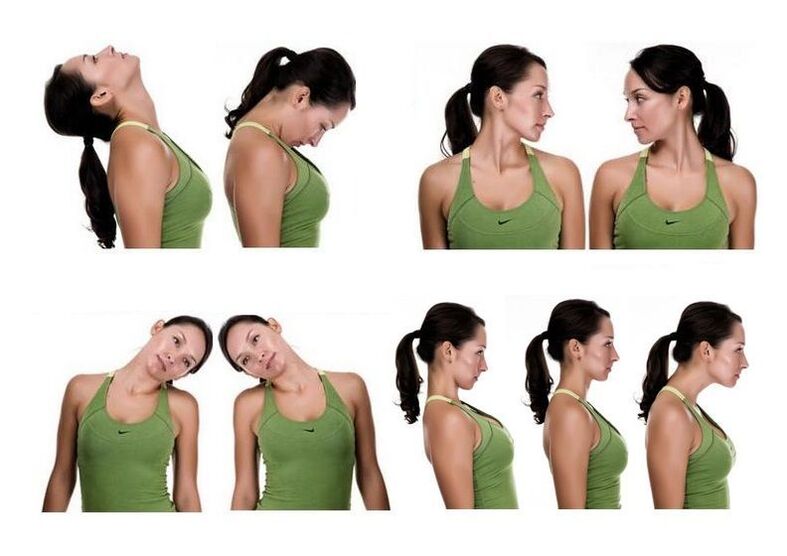
Symptoms of cervical osteochondrosis and home treatment require the approval of the treating specialist. The video in this article with a set of exercises for the neck muscles has not been published. There are lots of them on YouTube.
However, you should know that the instructions for exercise therapy with this diagnosis prohibit:
- Jog;
- perform all jumping movements;
- Pump up the muscles of the shoulder girdle and neck with dynamic exercises, especially with weights or resistance.
Important! With an exacerbation of cervical osteochondrosis, the symptoms and treatment with physical exercises, self-massage and physiotherapy procedures are suspended. In the acute phase, visiting a chiropractor is also prohibited. Rest and drug therapy with painkillers or non-steroidal anti-inflammatory tablets and ointments are indicated.
Treatment of cervical osteochondrosis with folk remedies is not very effective and is possible as auxiliary therapy in the rehabilitation period. Nevertheless, vertebrologists praise treatment with leeches and categorically advise against treatment with bee stings; Bay leaves also help with therapy.
Allergy is an insidious disease, the occurrence of which cannot be predicted, and an acute allergic reaction - Quincke's edema - can lead to anaphylactic shock and be fatal.
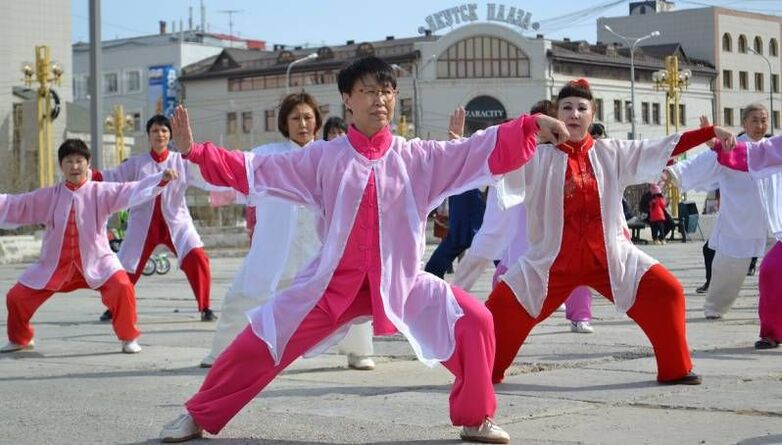
Among the non-traditional methods of treating cervical osteochondrosis we can recommend:
- dynamic and static yoga classes;
- Wushu, Taiji and Qigong gymnastics;
- Acupuncture and Su-Jok.
In addition to daily physical exercise, it is necessary to give up bad habits, monitor daily drinking consumption and balance the diet, as well as perform special morning exercises for osteochondrosis of the lumbar region. The weekly menu should include raw and semi-cooked vegetables, fresh seasonal fruits, fermented milk drinks and daily dishes.
Natural meat of dietary varieties and fish from the herring or salmon family should be consumed every other day. Replace coffee and tea with rosehip decoction and natural juices.
Treatment of cervical osteochondrosis is a long process that will take not months, but years. Osteochondrosis cannot be cured, but significant remission can be achieved. The results depend only on the patient himself, his diligence in following the recommendations and maintaining a healthy and active lifestyle.
FAQ
What are the symptoms of osteochondrosis of the cervical spine?
Osteochondrosis of the cervical spine can manifest itself as pain in the neck, shoulders, arms, dizziness, tinnitus, numbness or tingling in the arms, and limited mobility of the neck.
How to treat osteochondrosis of the cervical spine at home?
To relieve the symptoms of osteochondrosis of the cervical spine, you can use relaxation methods, exercises to strengthen the neck muscles, massage, warm compresses, as well as the use of pain-relieving ointments and gels.
What exercises help with osteochondrosis of the cervical spine?
To strengthen the neck muscles and relieve the symptoms of osteochondrosis of the cervical spine, stretching and strengthening exercises for the neck muscles, head rotation, flexion and rotation of the neck, and exercises to improve posture are useful.
Helpful advice
Tip #1
With osteochondrosis of the cervical spine, it is recommended to perform special exercises to strengthen the neck and back muscles. This improves blood circulation and reduces stress on the spine.
Tip #2
To relieve pain and reduce inflammation, you can use cold compresses or hot compresses. Cold helps reduce swelling, while heat improves blood circulation and relaxes muscles.
Tip #3
It is important to monitor your posture and avoid remaining in an incorrect position for a long period of time. Taking regular breaks to stretch and adjust your work position can reduce strain on the cervical spine.
























